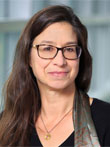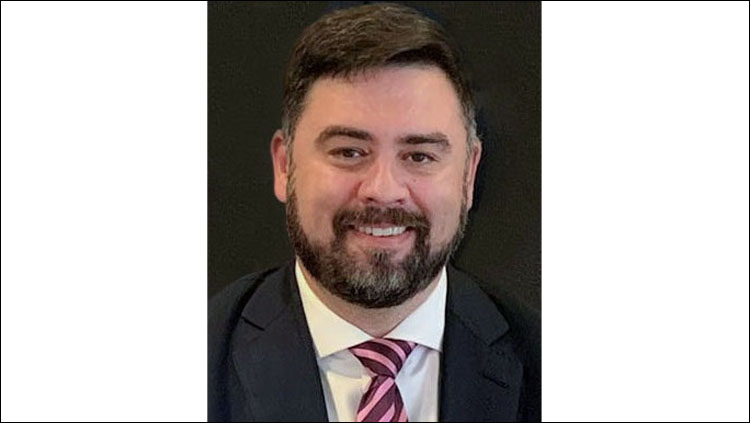Message From the President: A Sense of Community

Gina Turrigiano, SfN president
As I write this message the pandemic’s omicron surge has yet to peak, and the level of uncertainty about what this year has in store for us remains excruciatingly high. I have the dubious distinction of being the longest serving incoming president of SfN (two very, very long years), so as I step into my role as president I have a keen awareness of how tumultuous the past two years have been for the Society and especially for our members. I also have a deep sense of how important the society is for our members around the world and remember vividly how important it was for me when I was launching my career. When I started as an assistant professor at Brandeis University, my postdoctoral advisor and dear friend Eve Marder continued to mentor me in many important ways. Deeply involved in SfN herself, Eve encouraged me to volunteer. I joined the Program Committee early on and loved getting to know and interact with the other committee members – talented neuroscientists from around the world representing every subdiscipline of the field. After that SfN pretty much refused to let me go, and eventually I was elected to the SfN Council, first as a councilor, then as secretary, and now as president. During this time my sense of connection to the worldwide neuroscience community has deepened, as has my appreciation for the important role SfN plays in creating a professional home for our diverse membership.
It is exactly this sense of community – both personal and scientific – that we have been missing in the socially isolated world all of us have inhabited these past two years.It is exactly this sense of community – both personal and scientific – that we have been missing in the socially isolated world all of us have inhabited these past two years. It is more difficult to build or maintain connections with our lab members, collaborators, and friends through a screen than in person. For me, the social aspect of science – gathering to brainstorm solutions to an experimental problem, discussing a just-completed seminar with fellow audience members, diving into a poster’s details with its author at a lively poster session, and those intense personal encounters that can launch unexpected collaborations – are important sources of joy and inspiration that recharge my scientific life.
The loss of the in-person portion of Neuroscience 2021 was especially disheartening coming at a time when, for all of us, the need for these connections was greater than ever. At the same time, the past two years has forced SfN and many other scientific societies to adapt and innovate in a kind of trial by fire, and collectively we have discovered that there are aspects of virtual scientific exchange that are incredibly valuable – especially when they serve to increase access to those who would otherwise be excluded.
These realities – the immense value of in-person gatherings and the accessibility benefits of virtual events – are very much on the mind of Council as we enter 2022.These realities – the immense value of in-person gatherings and the accessibility benefits of virtual events – are very much on the mind of Council as we enter 2022. When the pandemic will release its grip on the world is impossible to predict, and we all have the sense that there may never be a ‘new normal’ as climate and societal disruptions rise. As a Society we must continue to invest in making our virtual offerings as engaging, relevant, and accessible as possible, while also working hard to design an in-person meeting that is resilient enough to ensure that we can bring the community together in person. As we look to Neuroscience 2022, these are the two principles that I am keeping at the top of my mind. On the virtual front, we continue to build on past lessons. For example, the solitary experience of poster presenters during last January’s Global Connectome evolved into the group discussions with poster-session peers during Neuroscience 2021; in many cases these were lively and engaging for trainees, and with extensive feedback we have ideas for how to improve them going forward. That said, we recognize that when it comes to designing engaging and interactive virtual content at the scale of SfN, we still have a ways to go.
SfN will thrive and adapt even in uncertain times like these as long as its diverse members continue to step up to offer their time and creativity.As we look toward another year of pandemic uncertainty and tumult, we must remind ourselves that SfN is more than just an annual meeting. Our Society serves as a foundation for the neuroscience community because it has something to offer to every neuroscientist at every stage of training, including work to increase the diversity and inclusion in our Society and the institutions it supports. These offerings support our community year-round, and their virtual format makes connecting with our distant peers easier. The roles SfN plays in advocacy (for funding, animal research, training resources) and public outreach and education help to grow awareness and support for neuroscience research around the world. SfN provides a platform for organizing the more than 500 volunteers that give their valuable time and expertise each year to make all this happen. It is when I think of this amazing collective effort that I find myself full of optimism for the future.
SfN will thrive and adapt even in uncertain times like these as long as its diverse members continue to step up to offer their time and creativity. I encourage you to do the same thing Eve asked me to do so many years ago: volunteer to join an SfN committee.


















